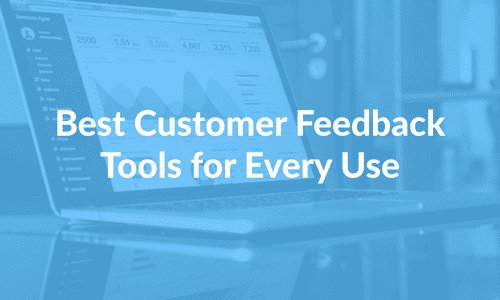Delivering a positive customer experience is essential if you want to retain your users and build a sense of loyalty. However, it’s difficult to know how your customers feel about your service if you’re not consistently measuring user experience metrics such as CSAT (customer satisfaction) and NPS (net promoter score).
Manually doing all these calculations is quite time-consuming, so businesses often utilize tools like Customerly to automate their customer experience measurement. In this article, we’ll be going through the essential metrics you should be tracking with your customer service solution.
But before we start discussing the different metrics, let’s explain customer experience measurement in a bit more detail.
What is Customer Experience Measurement?
Customer experience measurement is where you track and assess user engagement metrics to determine how satisfied your customers are with your service. In order to track some of these metrics, you need to collect feedback from your users and ask them targeted questions about aspects of your product or business.
Today, many successful online businesses Invest in customer engagement software like Customerly to automate their customer experience process and access various feedback tools, such as live chat and survey templates.
You can easily create and customize your own NPS or CSAT surveys and submit them through multiple channels to boost your chances of engagement. As you can see below, you can quickly track these customer experience metrics under one consolidated dashboard:
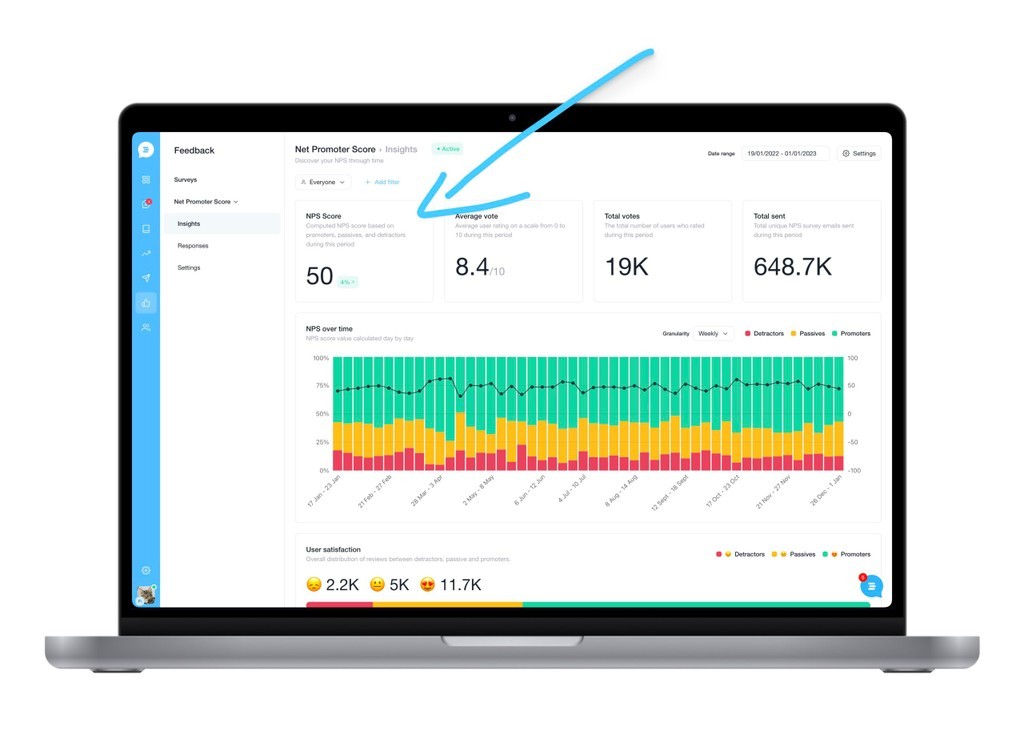
Why is Customer Experience Measurement Important?
1. It Drives Sales
Customer experience measurement helps you better understand and optimize the SaaS customer journey, which in turn should drive conversions. Tracking metrics like CSAT allows you to identify weak points in your business model and reasons behind customer churn. WeShoot, for instance, was able to up their sales by 20% with the help of our customer experience tools.
You can later remedy these weak points to resolve user concerns and strengthen customer relations. This should help reduce your churn rate and encourage repeat purchases, increasing your chances of conversion.
2. Consistent Good Customer Experience Assures Greater Return on Investment (ROI)
Tracking engagement metrics allows you to consistently deliver great customer experiences, which leads to better ROI in the long run. You’ll need to continuously make improvements to your service to keep your customers coming back for more and establish a sense of loyalty among your customers.
It’s important to understand your customer’s wants and needs to ensure they’re being satisfied where possible. That’s why businesses should encourage user feedback using platforms such as Customerly to enhance their customer experience measurement. For instance, NotJustAnalytics was able to prompt immediate feedback from users with the help of powerful Customerly tools, including live chat and marketing automation funnels.
3. Customer Advocacy
Tracking metrics with customer experience management tools helps you identify drops in user satisfaction early on, allowing you to resolve issues in a timely manner. Users are more likely to recommend your product if they receive great customer service from your support team.
Ways to Measure Customer Experience
Know Your Customer
Gather information about your customers, including their age, gender, location, interests, and so on. This should give you some insight into your target demographics and help you better accommodate their interests. Use this data to optimize your SMS and email marketing, surveys, customer conversations, and other business activities.
You can also track user journeys to see how customers interact with your platform and highlight points of frustration with behavioral analytics like heatmaps or rage clicks.
Determine where customers most commonly convert or churn during their journey to get a sense of your churn rate or customer satisfaction.
Use Tools to Automate Measurement
Streamline your customer experience measurement with customer experience management software such as Customerly. With us, you can receive in-depth insights into your NPS, user satisfaction, average user ratings, and much more.
We visualize your data into digestible graphs to make it easier for you to analyze your findings. For instance, you can see how your NPS has changed over time and compare each month’s results.
You can also gather textual feedback from your customers and summarise them with one click using AI with 10 things they like the most and 10 things you should improve.
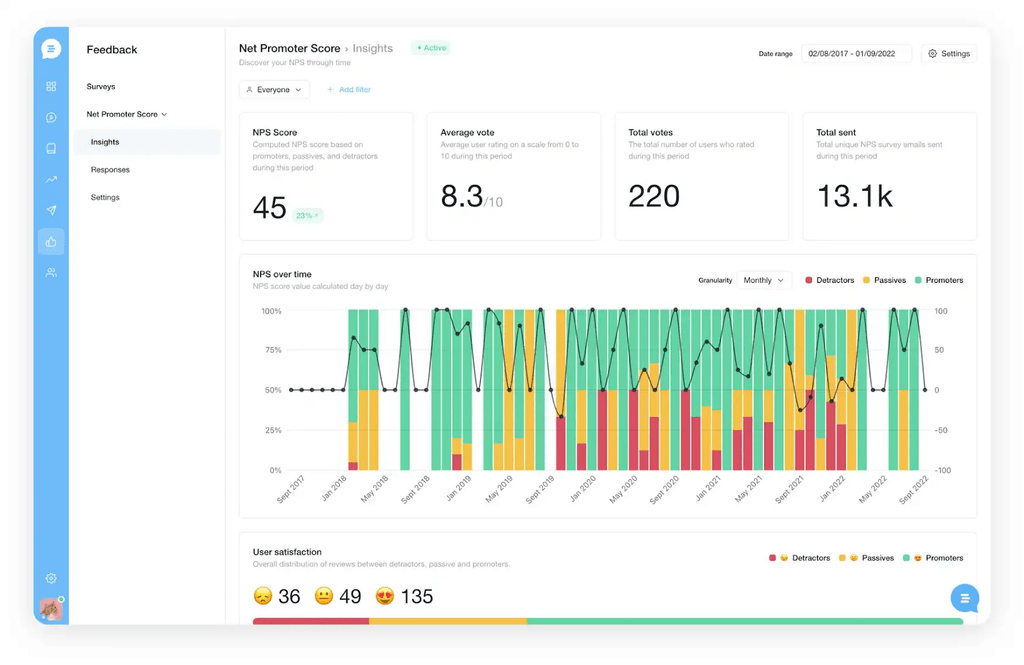
Measure Customer Experience in Real Time
Track customer engagement metrics live so you can predict user behavior and prevent major drops in satisfaction from occurring. This should keep your sales from being affected as well. Use customer experience analytics to identify problems early on for quicker issue resolution.
For example, if your satisfaction score suddenly decreases, you can start an investigation into the issue and intervene before it gets worse. If you’re not monitoring these metrics in real time, you may discover these problems too late and lose a bunch of customers in the process.
Consider Survey Questions
Sending out surveys is a great way to collect customer feedback and learn how they feel about your business. Optimize your feedback collection with survey templates from Customerly, and target specific metrics such as NPS, CES, and CSAT with carefully-curated questions.
Choose who to send your surveys to with your own dynamic list of contacts. You can also view user-level reports to discover which customers left feedback and start a conversation with them to find out more information.
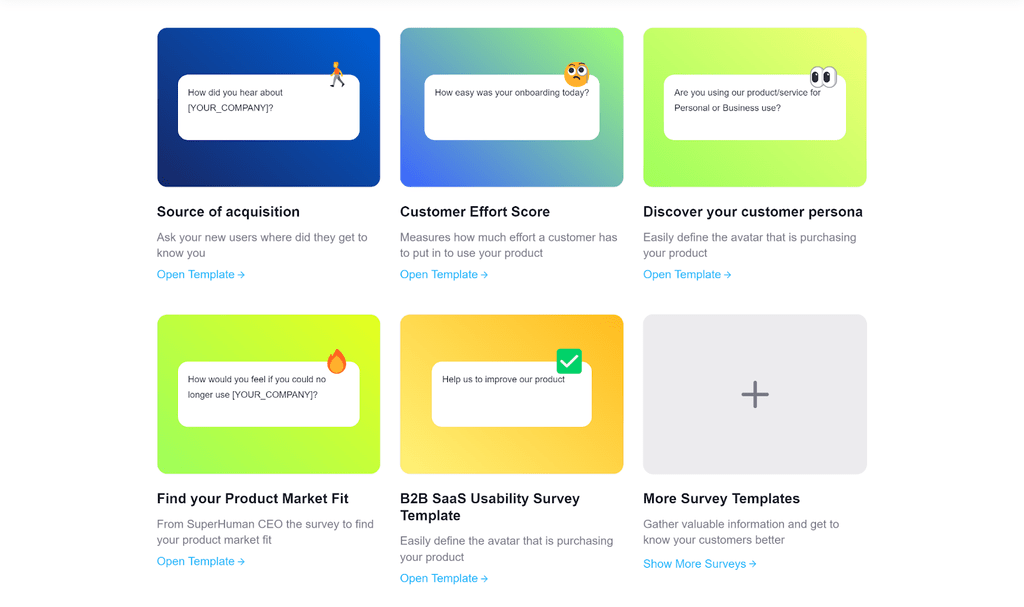
Regularly Analyze and Benchmark Customer Experience using Key Metrics
Monitor your customer experience metrics periodically to catch any changes in real-time, such as NPS and retention rate. Set benchmarks to aim for to help you consistently maintain a good level of customer satisfaction and minimize chances of churn.
Map out the different customer journey stages and apply metrics to each essential touchpoint to ensure you’re providing quality service all throughout your business.
The next section will delve into metrics you can analyze.
Iterate Customer Experience Strategy with Learnings
Identify ways to enhance your business using customer experience measurements and implement those strategies into your workflow. After making changes to your platform, gather feedback and assess your experience metrics once again to see if there are any improvements.
Essential Customer Experience Metrics You Should Be Tracking
1. Net Promoter Score (NPS)
Net Promoter Score (NPS) measures how likely customers are to recommend your product to other people. Tracking this metric usually involves asking customers to choose a number between 0 and 10 to represent how likely they are to advocate your business, with 0 being ‘not likely at all’ and 10 being ‘extremely likely’.
Depending on their response, customers are then separated into three categories:
- Detractors (0 to 6): These are customers who are unsatisfied with your product and could possibly damage your reputation with negative reviews or word-to-mouth.
- Passives (7 to 8): These customers are happy with your product but lack enthusiasm when it comes to advocating your brand. You’re also at risk of losing them to competitive offerings.
- Promoters (9 to 10): These users are loyal to your brand and repeatedly purchase your products. They’re enthusiastic about recommending your services and may motivate others to do the same.
How to Calculate NPS
Calculate your Net Promoter Score with the NPS formula:
NPS = Percentage of Promoters – Percentage of Detractors
NPS ranges from -100 to 100, with 100 being a perfect score. Ideally, you should be aiming for a score above 0.
Create your own NPS surveys with Customerly, and we will automatically deliver them to customers via email.
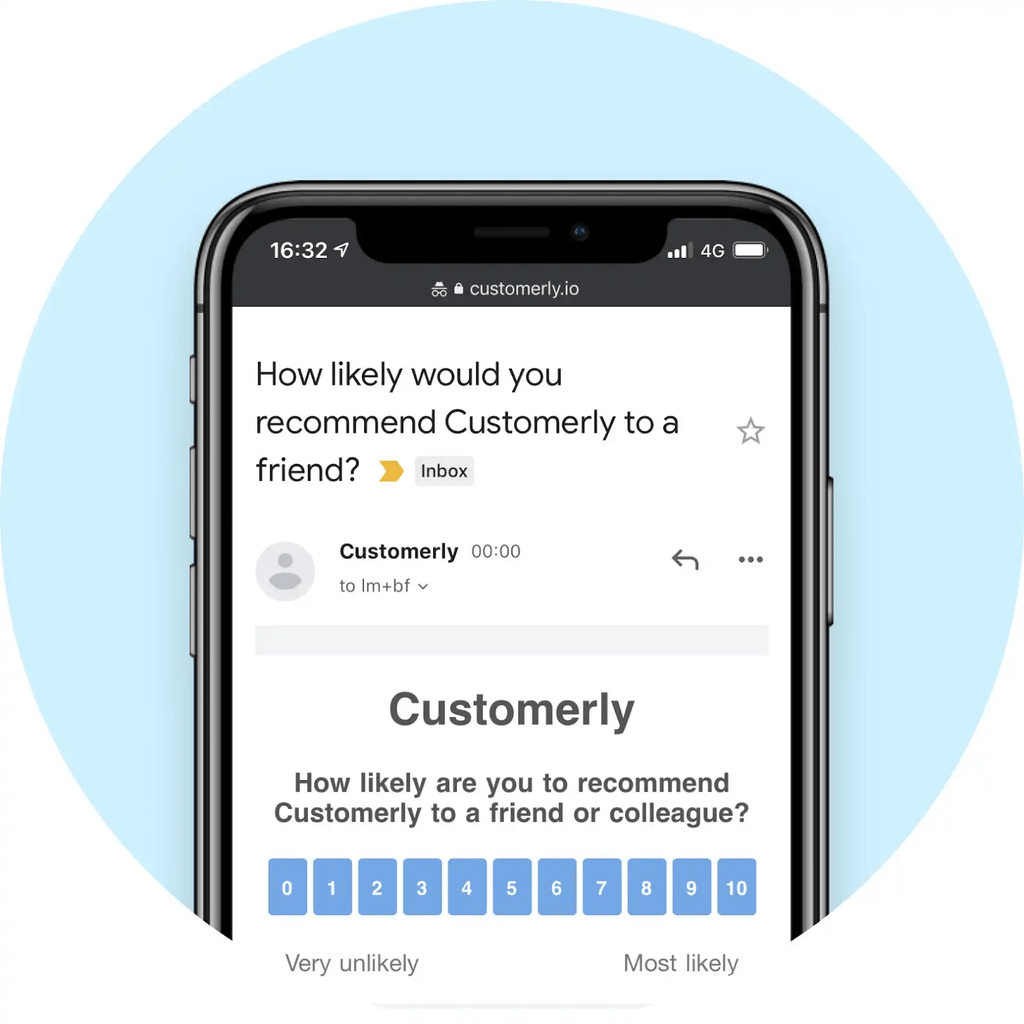
Filter your survey results according to user segments, such as paid customers and recent sign-ups.
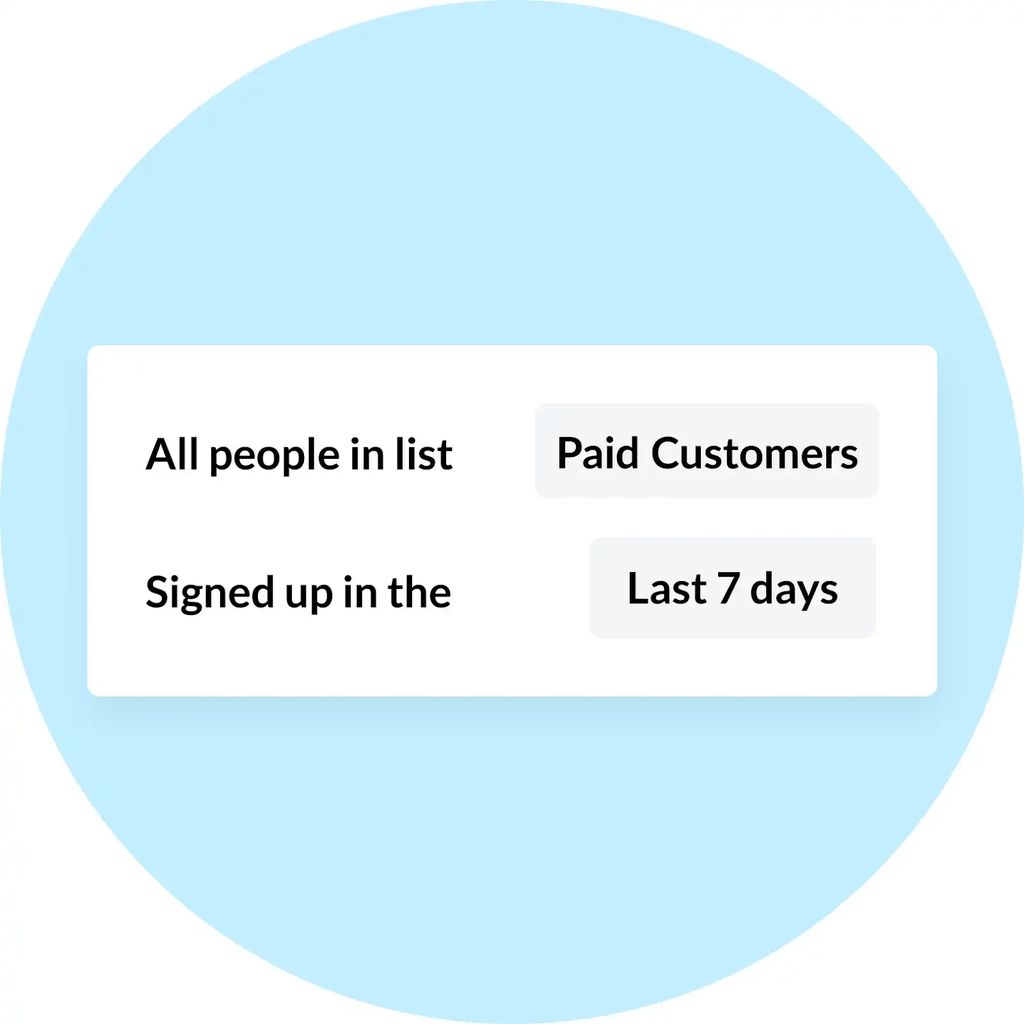
Identify new promoters and detractors using our intuitive dashboard. Use these insights to improve your customer experience and turn NPS detractors into promoters.
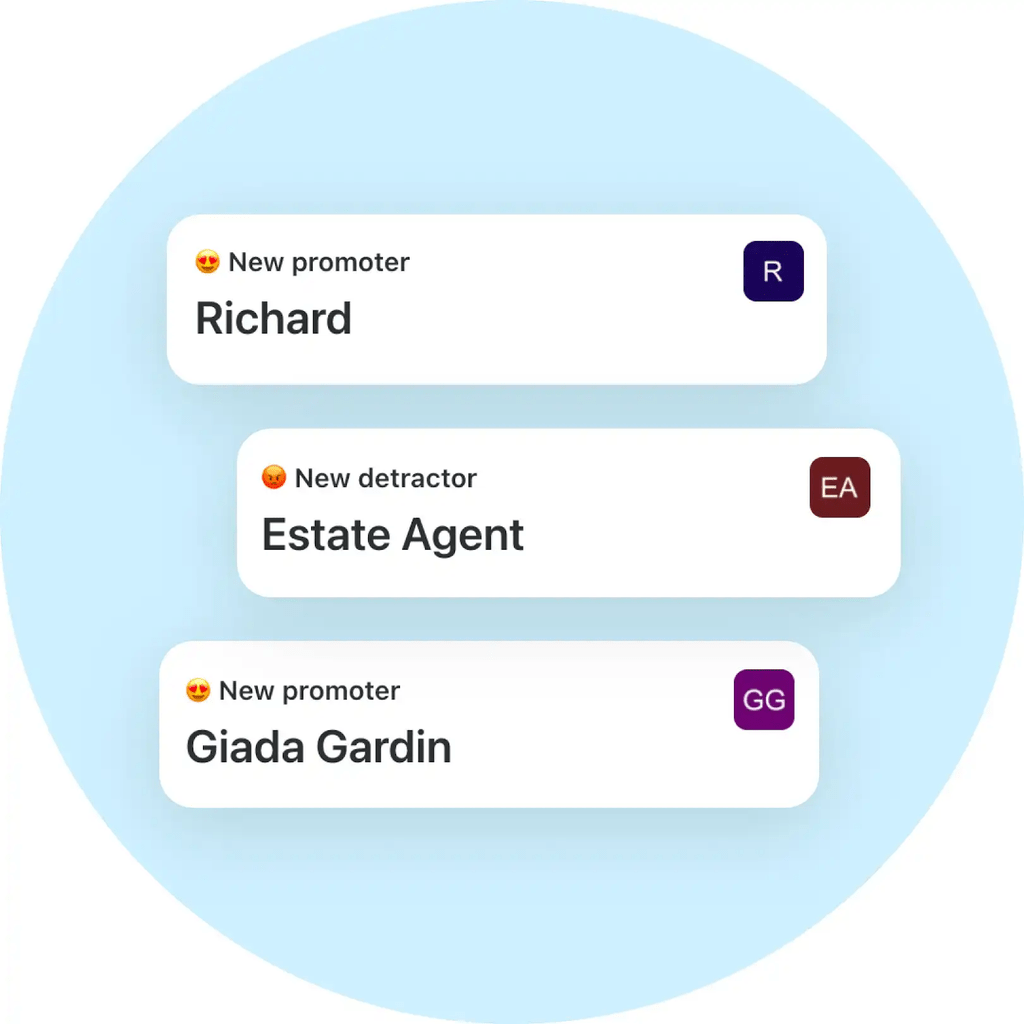
2. First Response Time (FRT)
First Response Time (FRT) measures the average time it takes for your support team to respond to customer requests.
How to Calculate FRT
Calculate FRT using the following formula:
FRT = Total amount of FRTs during a specific period of time (e.g., one hour) ÷ Total amount of resolved support tickets
This is another area where we can help, as you can utilize our funnel templates to map out customer journeys and streamline your customer support workflows.
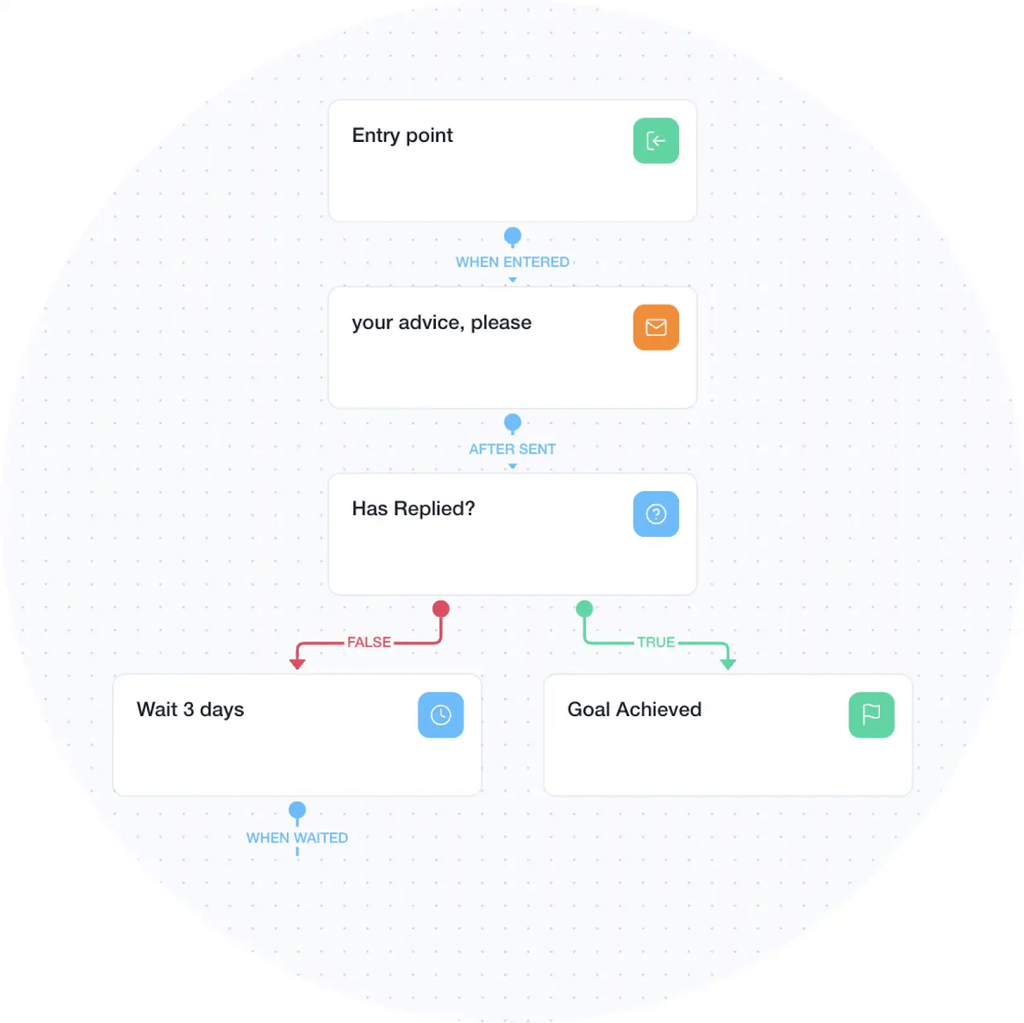
Nibol, for instance, was able to establish efficient lines of communication between team members with the help of Customerly, which helped improve their overall ticket management.
3. Customer Satisfaction Score (CSAT)
CSAT tracks how pleased customers are with your brand. This could refer to any aspect of your business, including specific products, customer service, new features, and so on.
How to Calculate CSAT
Measure CSAT with Customerly’s in-chat surveys, which are sent out via live chat for higher chances of engagement. Simply ask customers how satisfied they are with certain products or features on a scale of 1 to 5, with 5 being ‘very satisfied’.
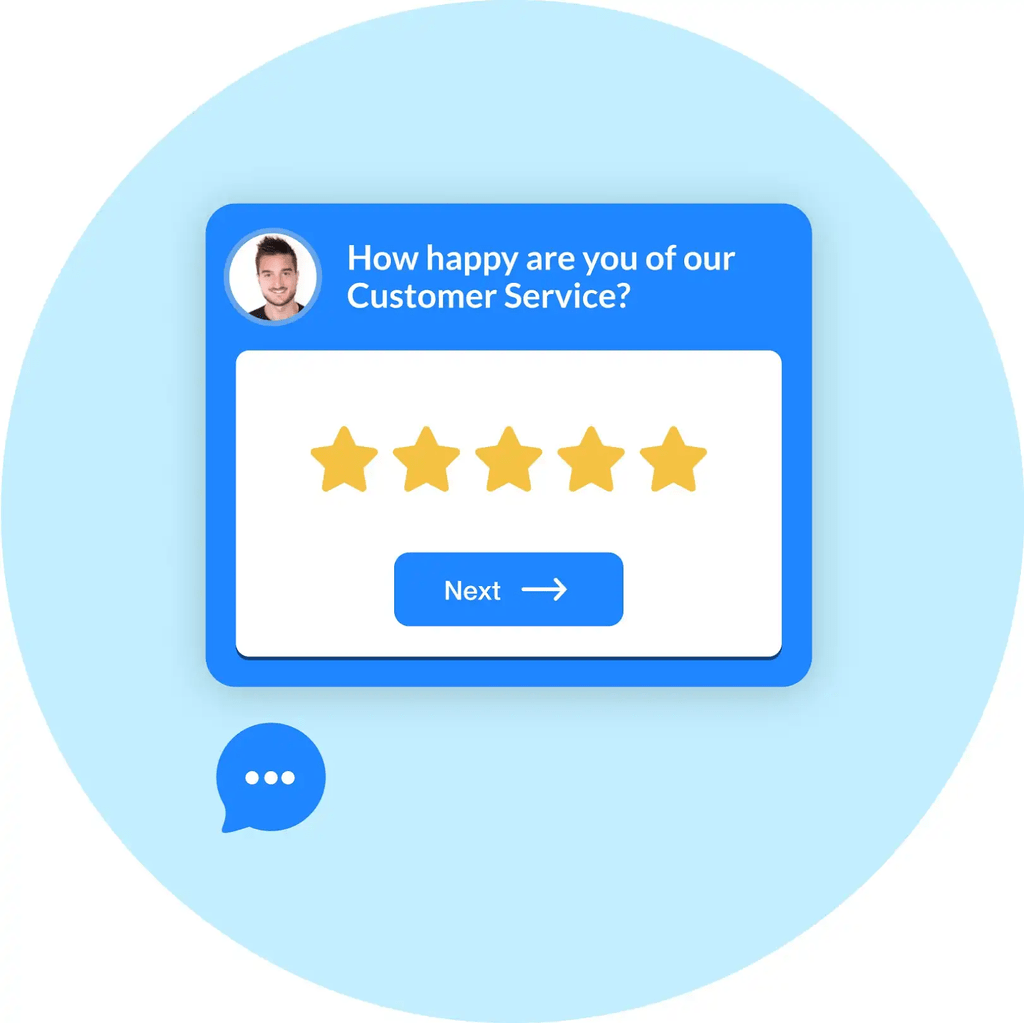
Alternatively, you can ask customers to rate their customer support experience out of 5 stars to gauge how effective your service was.
Your CSAT is the average satisfaction rating. The higher your score, the more satisfied your customers are with your company. With the help of Customerly, you can automate your CSAT calculations and consistently monitor user satisfaction on your dashboard.
4. Customer Effort Score (CES)
Customer Effort Score (CES) tells you how easy it is for customers to use your products or resolve a ticket. You should aim to make your customer experience as effortless as possible to minimize user frustrations.
How to Calculate Customer Effort Score
Measure your CES with custom surveys, where you ask customers to rate their user experience from ‘very easy’ to ‘extremely difficult’ (e.g., 1 to 5). For example, you can ask about their customer onboarding experience:
CES ranges from 0 to 100, where 100 is the ideal score. For the sake of this example, let’s say you use a 5-point scale in your surveys. A ‘positive’ user rating would then be a 3, 4, or 5. After conducting your surveys, use this formula to determine your CES:
CES = (Total Amount of ‘Positive’ Ratings ÷ Total Number of Responses) x 100
5. Customer Lifetime Value (CLV)
Customer Lifetime Value (CLV) estimates how much income each customer will bring to your business while they remain a client of yours.
How to Calculate CLV
Measure your CLV with this formula:
CLV = Average Transaction Size x Number of Transactions x Retention Period
Average Transaction Size = the amount a customer usually spends during a visit to your platform.
Number of Transactions = the average number of purchases a customer makes on your platform per year.
Retention Period = the average amount of time a customer stays with your brand (measured in years).
Here’s an example:
CLV = 30 x 20 x 5
CLV = $3,000 per customer
6. Churn Rate
Churn rate represents the number of customers you lose over a specific period of time. For instance, they don’t renew their subscription or buy from your company in a year.
How to Calculate Churn Rate
Let’s say the period of time we’re looking at is one year. To calculate the churn rate, divide the total number of users lost by the number of users gained over a year. Then, multiply the result by 100.
Here’s an example:
Churn Rate = (13 ÷ 100) x 100
Churn Rate = 13%
7. Retention Rate
Retention rate measures what percentage of customers continue to use your products over a certain period of time. You should aim for a high retention rate, which in turn, lowers your churn rate.
How to Measure Retention Rate
In this example, the period of time we’re measuring is a year. Use this formula to calculate your retention rate:
Retention Rate = ((Total number of customers at the end of the year – Total number of customers gained during the year) ÷ Total number of customers at the start of the year) x 100
Here’s an example:
Retention Rate = ((1450 – 500) ÷ 1000) x 100
Retention Rate = 95%
If you want to increase your retention rate, make sure to deliver quality customer service to make users feel valued. For instance, companies such as Fatture in Cloud streamlined their customer service with Customerly and achieved an increase in user retention as a result.
8. Customer Referral Rate
Customer referral rate tracks how many conversions took place via your referral program. Customers should be able to send referral links to their friends or family, which should lead them to sign up or make a purchase on your platform.
How to Calculate Customer Referral Rate
Your customer referral rate should tell you what percentage of customers came from referrals. Alternatively, you can calculate how many purchases were driven by referrals. Here are both formulas:
Referral Rate = Total Number of Referred Customers ÷ Total Number of Customers
Referral Rate = Total Number of Referral Purchases ÷ Total Number of Purchases
If you want to calculate what percentage of referrals are actually driving sales, use the following formula:
Total Number of Referral Link Clicks ÷ Total Number of Referred Purchases
Conclusion
When it comes to improving your customer service, it’s essential to understand the needs of your users with metrics such as CSAT and CES. Automate your customer experience measurements with tools like Customerly for faster calculations. We also provide you with pre-made survey templates to speed up your feedback collection.
Sign up for our free trial today to try out our customer service solutions, including live chat and CRM, and experience more optimized user management workflows.


